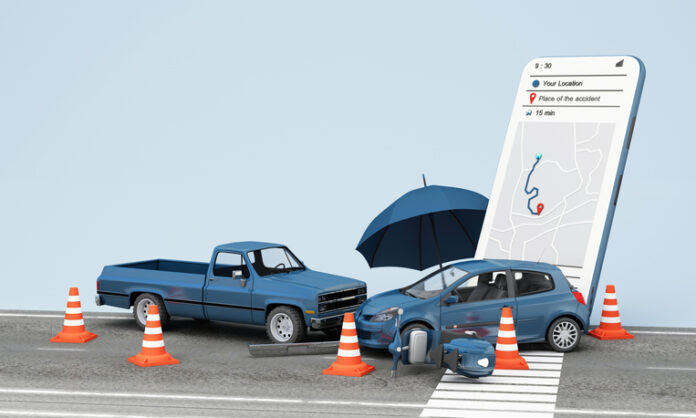Blockchain is a new digital system that keeps records safely. It works like a ledger that cannot be changed.
New technologies always change our world. And blockchain is at the forefront.
Firms like Bull Blockchain Law are leading the way in helping industries navigate the legal complexities of integrating blockchain technology into their operations.
Why? Because it can be used for more than just cryptocurrencies.
How Does Blockchain Work?
Blockchain has some special features:
- Records are not kept in one place. Many computers keep backup copies.
- Transactions cannot be erased or edited.
- It uses math and codes to prevent hacking.
- Everyone can view the records. There is transparency.
- Many computers form the network. If one fails, the others still work.
These qualities mean that blockchain has a lot of uses, including keeping all types of records. Car accident cases are one way it could be used.
Using Blockchain for Car Crashes
Saving Evidence Digitally
Reliance on paper usually means depending on records that can easily be lost, damaged, or fraudulently modified after the fact. This leads to disputes and makes uncovering the truth of what actually transpired difficult.
Blockchain gives a better way to store the details.
For example, key details about the accident such as the precise time, geographic coordinates of the location, vehicle VIN numbers, initial damage assessments, witness statements, and law enforcement reports could all be instantly uploaded to the blockchain network directly from the accident site. This creates a permanent record that cannot be disputed or altered after the fact.
And so, blockchain could permanently keep:
- The exact time of the collision.
- The location coordinates.
- The cars and drivers involved.
- How bad the damage looked initially.
- What witnesses saw happen.
- Police reports.
This would be incredibly useful for victims of such accidents. Since the evidence will be automatically captured, witnesses don’t have to worry about what to do after a car accident. Their mistakes right after the accident won’t be exploitable. And this may increase the odds of ending up with a fair system that justly compensates victims of accidents.
Managing Information Securely
Blockchain spreads data across many computers. No one can alter or delete records.
Insurance agents, lawyers, and police could access the reports. They would be sure no details had been manipulated. This could prevent fights over facts.
How Might Blockchain Help With Crashes?
Faster Crash Reporting
Phones might one day send crash data to blockchain networks instantly:
- Capture accident details automatically.
- Tell authorities immediately.
- Generate digital reports quickly.
- Start insurance claims right away.
So blockchain could document crashes fully and reliably.
Fighting Insurance Claim Fraud
Insurance claim procedures are notoriously cumbersome. The blockchain offers a way of simplifying these processes and reducing fraud.
Some examples include:
- Validating Accident Legitimacy – Insurers could check the decentralized ledger documenting the time and location of an accident to confirm vehicles and individuals were actually involved.
- Streamlining Claim Investigations – Adjusters could rapidly verify claim information against permanent documentation on the blockchain from authorities and witnesses.
- Expediting Settlements – With validated details immutably recorded, out-of-court legal settlements can be determined quicker based on transparent procedural logic defined in smart contracts.
- Discouraging Fraud Attempts – Permanent tamper-proof records make successfully filing illegitimate claims extremely difficult.
Storing Legal Evidence
Court cases require very careful records. Blockchain gives new evidence abilities:
- Keep files permanently.
- Ensure documents are unchanged.
- Show the chain of custody clearly.
- Make evidence easier to confirm as authentic.
- Reduce chances of tampering.
How Could Blockchain Be Used?
Integrating Smart Contracts
Smart contracts are programs stored in blockchain systems. For crashes, they might:
- Start claims automatically when certain conditions are met.
- Set exact rules for compensation amounts.
- Define standard processes to follow.
- Need less human oversight.
Protecting Privacy
While blockchain improves transparency, privacy still matters. Advanced coding could:
- Keep personal details anonymous.
- Shield people’s information.
- Control who sees what.
- Follow laws about data protection.
What Are the Challenges?
Existing Issues
Blockchain has some problems currently:
- Hard to put into place.
- Very expensive to develop initially.
- Requires lots of computing power and networks.
- Not many people use it yet.
- Unclear laws and regulations around it.
Questions About Scale
Blockchain networks must handle huge amounts of data. Crashes generate tons of data very quickly.
Developers are working on:
- Better processing abilities.
- More efficient systems.
- Reduced computing needs.
- Easier information management.
Who Stands to Benefit?
Changing Insurance
Insurance companies stand to benefit substantially from transitioning claims management and fraud detection processes to leverage blockchain-based accident documentation:
- Reduced risk exposure from fraudulent claims
- Faster claims processing and improved customer experience
- Lower administrative expenses through automation
- Enhanced consumer trust in fair outcomes
- More accurate and precise actuarial risk models
These improvements may necessitate changes to existing business approaches as automated technologies handle high-volume, low-complexity tasks previously performed manually. Workforce disruption should be appropriately managed.
Improving Legal Processes
Lawyers might use blockchain for:
- Easier evidence gathering and storage.
- Quicker case resolutions.
- Fewer fights over facts and documents.
- Better investigation capabilities.
- Increased court efficiency.
How Does Blockchain Keep Information Safe?
Math-Based Security
Blockchain uses math and encryption methods to:
- Confirm data is unchanged.
- Stop unauthorized access.
- Provide detailed activity records.
- Send data securely.
Decentralized Design
Unlike regular systems, blockchain doesn’t store data in one place. It spreads information across a network. This offers:
- More resilience. If one part has issues, the rest keep working.
- Lower chance of complete failure.
- Overall more reliability.
- Built-in backup systems.
What Comes Next for Blockchain?
Blockchain delivering unprecedented digital transparency and efficiency for accident reporting processes seems inevitable given the immense potential benefits and groundwork being laid today across public and private sector initiatives.
Emergence of Complementary Next-Generation Technologies
Future blockchain innovation will likely encompass integrations with other cutting-edge technologies including:
- Artificial intelligence for extracting insights
- Machine learning to identify documentation discrepancies
- Predictive analytics for accurate claim forecasting
- Internet of Things connectivity enabling real-time data flows
These complementary technologies reinforce and extend decentralized capabilities.
Gradual Yet Inevitable Marketplace Disruption
Beyond streamlining current practices surrounding auto insurance administration and legal proceedings, blockchain enables wholly new business approaches. As adoption spreads, blockchain could fundamentally disrupt traditional roles, processes, and competitive dynamics across these markets.
Potential for Huge Impact
Blockchain is more than just a new technology. It requires totally rethinking how to manage information.
It could make documenting crashes much faster, more transparent, and more trustworthy.
What Legal Issues Exist?
Who Owns the Data?
Blockchain creates big philosophical questions:
- Who has rights over the stored information?
- How is personal privacy guaranteed?
- What rules ensure fairness?
Developing Government Rules
Officials need to make new laws about blockchain:
- Set technology benchmarks.
- Outline legal boundaries.
- Protect people’s rights.
- Encourage innovation responsibly.
Adopting the Technology
Bridge the technological promise of blockchain and practical real-world deliverables demands methodical planning by insurers, legal firms, regulators and technology partners.
Cultivating Blockchain’s Continued Evolution
Inclusive blockchain advancement for accident documentation relies on:
- Open standardization efforts
- Commitments to platform interoperability
- Academic/industry research collaborations
- Patent pooling to prevent obstruction
With collective action, it is possible to ensure that breakthrough capabilities manifest faster.
Promoting Gradual Technology Integration
For individual stakeholders, measured blockchain adoption reduces disruption through tactics like:
- Limited pilot initiatives
- Legacy system integration
- Comprehensive staff education
- Regular project milestone assessments
Deliberate, incremental modernization is what will smooth the transition.
Conclusion
Blockchain may revolutionize documenting car crashes. And it ensuring secure and accurate records could help accident investigations a lot.
There are complex issues around laws, ethics, and technology capabilities. And so, moving forward successfully takes cooperation, creativity, and vision.
Key Takeaways
- Blockchain promises reliable documentation.
- Current limitations exist still.
- Rules and standards matter.
- Collaboration drives progress.
- Careful implementation is key.
Disclaimer: This article contains sponsored marketing content. It is intended for promotional purposes and should not be considered as an endorsement or recommendation by our website. Readers are encouraged to conduct their own research and exercise their own judgment before making any decisions based on the information provided in this article.




































